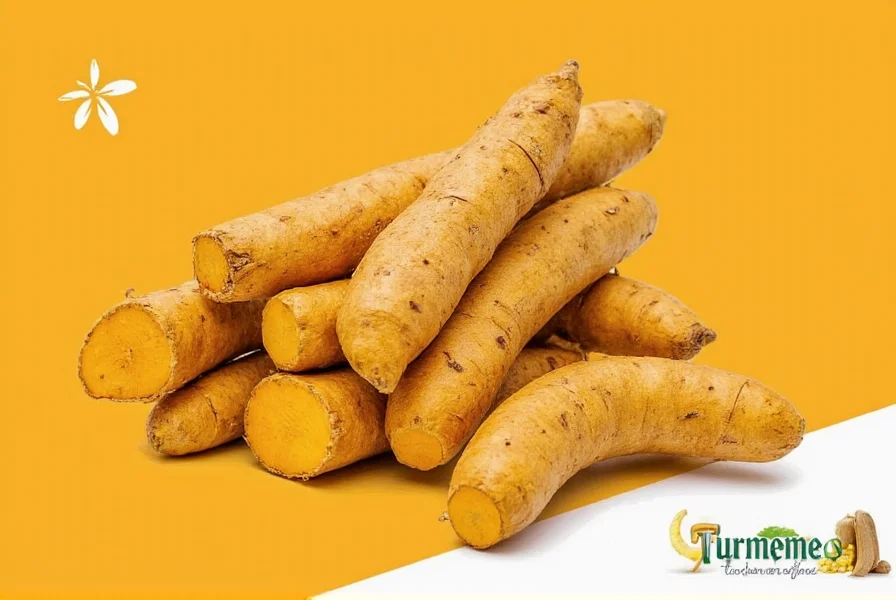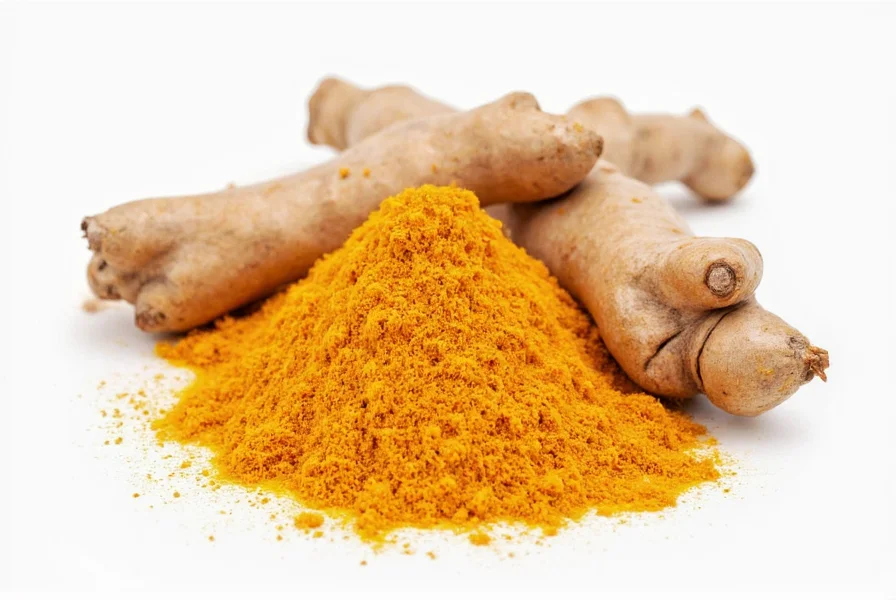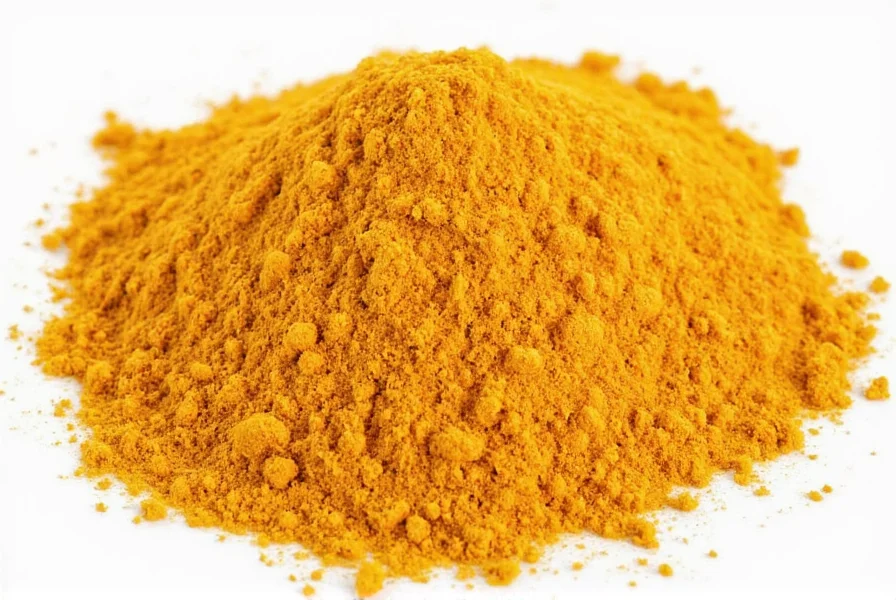The turmeric plant (Curcuma longa) belongs to the ginger family (Zingiberaceae) and has been cultivated for over 4,000 years across South and Southeast Asia. While most consumers encounter turmeric as a dried spice, the fresh rhizome represents the plant's original, unprocessed form with unique properties that differ significantly from its powdered counterpart.
Botanical Characteristics of Turmeric Rhizome
Turmeric rhizomes grow horizontally beneath the soil surface, forming knobby, segmented structures that range from 2-8 cm in length. The exterior skin appears brownish-yellow, while the interior reveals the characteristic deep orange-yellow flesh responsible for turmeric's coloring properties. Each rhizome segment contains growth buds that enable vegetative propagation.
| Characteristic | Details |
|---|---|
| Scientific Name | Curcuma longa |
| Family | Zingiberaceae (Ginger family) |
| Primary Bioactive Compound | Curcumin (diferuloylmethane) |
| Typical Growing Regions | India, Southeast Asia, tropical regions worldwide |
| Harvest Time | 8-10 months after planting |
Nutritional Composition and Active Compounds
Fresh turmeric rhizome contains approximately 60-70% moisture, significantly higher than dried turmeric powder (8-10% moisture). This moisture content affects both the concentration of active compounds and culinary applications. The primary curcuminoids in turmeric include:
- Curcumin (77%) - the most studied compound with antioxidant properties
- Demethoxycurcumin (17%)
- Bisdemethoxycurcumin (6%)
Research suggests fresh turmeric rhizome may contain up to 3-5% curcumin by weight, though this varies based on cultivar, growing conditions, and harvest time. The rhizome also contains volatile oils (turmerone, atlantone, zingiberene), proteins, resins, and various minerals including potassium, iron, and magnesium.
Turmeric Rhizome vs. Powdered Turmeric
Understanding the differences between fresh turmeric rhizome and powdered turmeric is essential for both culinary and potential health applications. The processing required to create powder affects the chemical composition:
- Moisture content: Fresh rhizomes contain 60-70% water versus 8-10% in powder
- Curcumin concentration: Fresh may have higher relative concentration before drying
- Additional compounds: Fresh contains enzymes and volatile compounds lost during drying
- Flavor profile: Fresh offers brighter, more complex flavor with ginger-like notes
- Storage: Fresh lasts 2-3 weeks refrigerated versus 1-2 years for properly stored powder
When substituting fresh turmeric rhizome for powder in recipes, use a 3:1 ratio (3 parts fresh to 1 part powder) due to the moisture content difference. For example, 1 teaspoon of turmeric powder equals approximately 1 tablespoon of freshly grated turmeric.

Traditional and Modern Applications
Cultures across Asia have utilized fresh turmeric rhizome for centuries in both culinary and traditional medicine systems. In Ayurveda and Traditional Chinese Medicine, practitioners have incorporated turmeric rhizome for its purported anti-inflammatory properties. Culinary traditions in India, Thailand, and Indonesia feature fresh turmeric in curry pastes, rice dishes, and beverages.
Modern research has investigated curcumin's potential effects on inflammation pathways, though scientists emphasize that most studies use concentrated extracts rather than whole rhizome. The National Center for Complementary and Integrative Health notes that curcumin has poor bioavailability when consumed alone, which is why traditional preparations often combine turmeric with black pepper (containing piperine) or fats to enhance absorption.
Selecting, Storing, and Using Fresh Turmeric Rhizome
When selecting fresh turmeric rhizome at markets, look for firm, plump pieces with smooth skin and no soft spots or mold. Smaller rhizome segments often have more concentrated flavor than larger ones. Proper storage techniques can extend freshness:
- Refrigerate whole rhizomes in a sealed container for 2-3 weeks
- Freeze peeled rhizomes in airtight bags for up to 6 months
- Store in a jar of water in the refrigerator, changing water every few days
- Preserve in vinegar or lemon juice for culinary applications
To prepare fresh turmeric, peel the thin skin with a spoon (similar to ginger), then grate, slice, or juice as needed. The vibrant color can stain surfaces and clothing, so handle with care. For maximum potential benefit in dietary applications, combine with black pepper and healthy fats like coconut oil.
Safety Considerations and Interactions
Fresh turmeric rhizome is generally recognized as safe when consumed in typical food amounts. However, those considering larger quantities for potential health benefits should be aware of several considerations:
- May interact with blood-thinning medications due to potential antiplatelet effects
- Could exacerbate gallbladder issues in susceptible individuals
- High doses might cause gastrointestinal discomfort
- Pregnant women should consult healthcare providers before medicinal use
The European Food Safety Authority has established an acceptable daily intake of 0.1 mg of curcumin per kilogram of body weight. While fresh turmeric rhizome contains lower concentrations than extracts, moderation remains important, especially for those with medical conditions or taking medications.
Growing Turmeric Rhizome at Home
Cultivating turmeric rhizome is feasible in warm climates or as a container plant in temperate regions. The process requires:
- Well-draining, loamy soil with pH 5.5-7.5
- Partial shade to full sun (depending on climate)
- Consistent moisture without waterlogging
- Temperatures between 20-35°C (68-95°F)
- 8-10 months of growing season before harvest
Gardeners typically plant fresh rhizome segments with growth buds facing upward, about 5-7 cm deep. The plants develop large leaves while the rhizomes grow underground. Harvest occurs when leaves yellow and die back, typically after the first frost in temperate climates or at the end of the rainy season in tropical regions.

Conclusion
Fresh turmeric rhizome represents the original, unprocessed form of this valuable botanical with distinct properties compared to powdered turmeric. Its vibrant color, complex flavor profile, and potential bioactive compounds make it valuable in both culinary and traditional wellness practices. While scientific research continues to investigate curcumin's properties, incorporating fresh turmeric rhizome into a varied diet offers a connection to centuries of cultural tradition and potential nutritional benefits. As with any botanical, understanding proper selection, storage, and usage maximizes both culinary enjoyment and potential benefits.
Frequently Asked Questions
What is the difference between turmeric root and turmeric rhizome?
Turmeric doesn't technically have a root system; what's commonly called "turmeric root" is actually a rhizome - an underground stem. Rhizomes grow horizontally beneath the soil surface and contain nodes from which new shoots and roots develop. This distinguishes them from true roots, which grow vertically downward and lack nodes.
How much fresh turmeric rhizome equals one teaspoon of turmeric powder?
Generally, 1 teaspoon of turmeric powder equals approximately 1 tablespoon (3 teaspoons) of freshly grated turmeric rhizome. This 3:1 ratio accounts for the significant moisture difference between fresh rhizome (60-70% water) and dried powder (8-10% water).
Can you eat turmeric rhizome raw?
Yes, fresh turmeric rhizome can be consumed raw, though its strong, earthy flavor and potential staining properties mean most people use it in moderation. Raw consumption typically involves grating small amounts into smoothies, juices, or salad dressings. Those with sensitive digestive systems may experience mild discomfort with raw consumption.
How long does fresh turmeric rhizome last in the refrigerator?
Properly stored whole turmeric rhizomes can last 2-3 weeks in the refrigerator when kept in a sealed container or wrapped in paper towels inside a perforated plastic bag. Peeled or cut rhizomes should be used within 1 week. For longer storage, freeze turmeric rhizome pieces for up to 6 months.
Does fresh turmeric rhizome have more health benefits than powdered turmeric?
Fresh turmeric rhizome contains higher moisture content and may preserve certain volatile compounds lost during the drying process required for powder production. However, both forms contain curcumin and other curcuminoids. The primary difference lies in concentration due to water content rather than fundamental compositional differences. Research on potential health benefits typically uses standardized extracts rather than comparing fresh versus dried forms directly.











 浙公网安备
33010002000092号
浙公网安备
33010002000092号 浙B2-20120091-4
浙B2-20120091-4